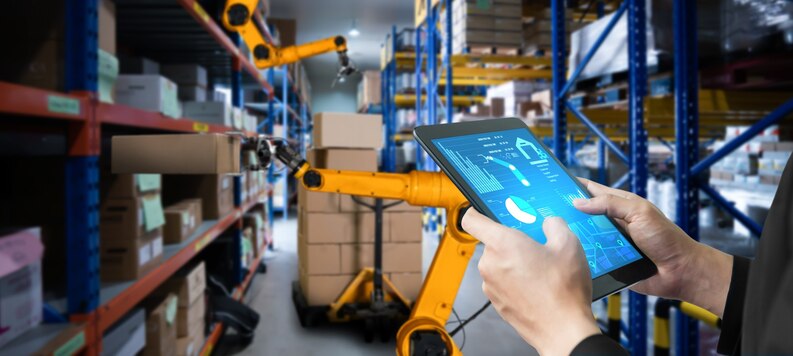Introduction:
In today’s world, environmental sustainability is a top priority for businesses across industries. Lift trucks, commonly used in warehouses, distribution centers, and manufacturing facilities, are no exception. As companies strive to reduce their carbon footprint and comply with emissions regulations, it is crucial to consider the environmental impact of lift truck operations. In this blog, we will explore the key environmental considerations and emissions regulations that businesses need to be aware of when it comes to lifting trucks.
- Electric Lift Trucks:
One of the most significant environmental benefits of lift trucks is the shift towards electric-powered models. Electric lift trucks produce zero emissions, reducing air pollution and minimizing the carbon footprint associated with their operation. Additionally, electric models tend to be quieter, making them ideal for indoor operations and reducing noise pollution.
Moreover, electric lift trucks offer several operational advantages. They eliminate the need for fossil fuels, reducing dependency on non-renewable resources. This not only contributes to environmental sustainability but also provides long-term cost savings as electricity is generally cheaper than fuel. The absence of exhaust emissions means improved air quality and a healthier work environment for employees, reducing the risk of respiratory issues.
Electric models also require less maintenance compared to their combustion engine counterparts, resulting in lower maintenance costs and less downtime for repairs. Furthermore, their quiet operation allows for increased communication and safety in busy work areas, minimizing the risk of accidents.
With advancements in battery technology, electric lift trucks now offer longer run times, making them a viable and efficient option for businesses looking to reduce their environmental impact while maintaining productivity. Investing in electric lift trucks not only aligns with sustainability goals but also showcases a commitment to corporate social responsibility.
- Alternative Fuels:
For businesses that still require internal combustion engine (ICE) lift trucks, it is important to explore alternative fuels that are more environmentally friendly. Options such as propane or compressed natural gas (CNG) can significantly reduce emissions compared to traditional diesel or gasoline-powered lift trucks. These alternative fuels help to mitigate air pollution and contribute to a cleaner and healthier work environment.
Alternative fuels provide a viable solution for businesses that cannot fully transition to electric lift trucks. Here are some alternative fuel options that can help reduce emissions and environmental impact:
- Propane (LPG):
Propane, also known as liquefied petroleum gas (LPG), is a popular alternative fuel for lift trucks. Propane-powered lift trucks emit fewer greenhouse gases and pollutants compared to diesel or gasoline models. Propane combustion produces lower levels of carbon monoxide, nitrogen oxide, and particulate matter. Additionally, propane is a cleaner-burning fuel that does not contain sulfur, reducing the emission of sulfur dioxide, a major contributor to air pollution. Propane is readily available, and refueling is convenient as it can be done on-site.
- Compressed Natural Gas (CNG):
Compressed natural gas (CNG) is another alternative fuel option for lift trucks. CNG-powered lift trucks produce significantly lower emissions compared to diesel or gasoline models. When combusted, natural gas releases fewer greenhouse gases, nitrogen oxide, and particulate matter. CNG is also a cleaner-burning fuel that does not contain sulfur or lead. It is important to note that CNG requires specialized refueling infrastructure, so businesses considering this option should ensure that the necessary infrastructure is available.
- Hydrogen Fuel Cells:
Hydrogen fuel cells are an emerging technology that holds promise for the future of lift truck operations. Fuel cell-powered lift trucks use hydrogen gas to generate electricity, producing only water vapor as a byproduct. This makes them completely emissions-free, offering a sustainable solution for businesses aiming to minimize their environmental impact. Hydrogen fuel cells also offer longer run times and faster refueling compared to traditional battery-powered electric lift trucks. However, the infrastructure for hydrogen refueling is still developing, and the initial investment for fuel cell technology can be higher.
- Biofuels:
Biofuels, such as biodiesel and ethanol, are renewable fuels derived from organic matter. Biodiesel is typically produced from vegetable oils or animal fats, while ethanol is derived from crops like corn, sugarcane, or switchgrass. Biofuels can be used as a substitute for diesel or gasoline in lift trucks, significantly reducing carbon emissions. Biodiesel and ethanol are considered carbon-neutral fuels because the carbon dioxide emitted during combustion is offset by the carbon dioxide absorbed during the growth of the feedstock. However, it is important to ensure that biofuels used are produced sustainably and do not compete with food production or contribute to deforestation.
- Hybrid Systems:
Hybrid systems combine different power sources, such as an internal combustion engine and an electric motor, to optimize fuel efficiency and reduce emissions. Lift trucks equipped with hybrid systems can switch between power sources based on demand, using the internal combustion engine for heavy lifting operations and the electric motor for lighter tasks. This allows for reduced fuel consumption and emissions, making hybrid lift trucks a more environmentally friendly option.
When considering alternative fuels for lift trucks, businesses should evaluate factors such as availability, infrastructure requirements, and compatibility with existing equipment. It is also important to consult with manufacturers, fuel suppliers, and industry experts to ensure proper implementation and compliance with regulations.
- Emissions Regulations:
Businesses must also stay up-to-date with emissions regulations and compliance standards set by local, regional, and national authorities. These regulations often impose limits on emissions, noise levels, and other environmental factors. Being aware of and adhering to these regulations ensures that lift truck operations are in line with environmental standards, avoiding penalties and potential reputational damage.
Non-compliance with emissions regulations can have serious consequences for businesses, including financial penalties, legal issues, and damage to their reputation. Businesses must stay informed about the emissions regulations specific to their industry and location. These regulations typically set limits on emissions of pollutants such as carbon monoxide, nitrogen oxide, particulate matter, and hydrocarbons. They may also include noise level restrictions to minimize noise pollution.
Adhering to these regulations requires regular monitoring of emissions, conducting emissions testing, and implementing necessary measures to reduce emissions, such as using alternative fuels or upgrading equipment.
Additionally, businesses should maintain accurate records and documentation to demonstrate compliance with emissions standards. By proactively staying ahead of emissions regulations, businesses can ensure their lift truck operations are environmentally responsible and avoid any potential legal or financial consequences.
- Proper Maintenance and Efficiency:
Regular maintenance and proper upkeep of lift trucks are vital for minimizing emissions and maximizing efficiency. Regular servicing helps ensure that engines are running optimally, reducing fuel consumption and emissions. Additionally, implementing efficient operating practices, such as reducing idling time and optimizing load capacity, can further enhance environmental performance.
Regular maintenance and proper upkeep of lift trucks are essential for minimizing emissions and maximizing efficiency. Scheduled servicing helps identify and address issues that could negatively impact fuel consumption and emissions. This includes checking engine performance, inspecting exhaust systems, and replacing worn-out parts.
Proper maintenance also extends the lifespan of lift trucks, reducing the need for frequent replacements and minimizing waste. In addition to maintenance, implementing efficient operating practices can further enhance environmental performance. This includes optimizing load capacity to reduce the number of trips, avoiding excessive idling, and promoting eco-driving techniques such as smooth acceleration and deceleration. By prioritizing regular maintenance and adopting efficient operating practices, businesses can reduce emissions, minimize fuel consumption, and improve overall environmental performance
- Recycling and Waste Management:
Proper waste management practices, including recycling and responsible disposal of lift truck batteries, fluids, and other components, are essential for minimizing environmental impact. Businesses should establish recycling programs and work with certified recycling centers to ensure that waste is managed in an environmentally responsible manner.
In addition to implementing recycling programs, businesses should also focus on responsible disposal of lift truck batteries, fluids, and other components. Lift truck batteries contain toxic materials, such as lead and sulfuric acid, that can be harmful to the environment if not handled properly. It is important to work with certified recycling centers that specialize in battery recycling to ensure the safe and efficient disposal of these batteries.
Similarly, fluids used in lift trucks, such as oil, coolant, and hydraulic fluids, should be collected and recycled or disposed of according to local regulations to prevent contamination of soil and water sources. By prioritizing recycling and responsible waste management, businesses can minimize their environmental impact and contribute to a more sustainable future
Conclusion:
As businesses strive for environmental sustainability, it is crucial to consider the environmental impact of lift trucks. By transitioning to electric models, exploring alternative fuels, adhering to emissions regulations, and implementing proper maintenance and waste management practices, companies can significantly reduce their carbon footprint and contribute to a cleaner and greener future. Taking these environmental considerations into account not only benefits the planet but also enhances the overall efficiency and reputation of the business.





The site descriptions provide clear and concise information, making it easy for visitors to understand the offerings.